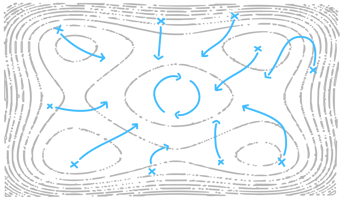I recently caught up with a group of HR experts whose organizational unit (counting over 60 people) had been reorganized according to a variation of the Holacracy or Sociocracy system, a project I had previously supported.
This is a summary of this HR team’s learnings after working for roughly one and a half years within the new set-up. Five crucial learnings include:
-
Getting rid of bosses and moving towards self-organizing teams is one thing – compensating for the good things strong managers do is another
-
Timing can be your friend: When and how to start experimenting with a self-managing organization
-
Plan in enough time and learn self-organizing as you go, including continuous improvement of the organization design
-
Ensure sufficient support, both in terms of hands-on facilitation to practice self-managed organizing, and through enlisting senior management sponsorship if necessary
-
Pay attention to the interfaces of the self-organized unit because the organizational environment might have different expectations
The team’s learnings are, in our experience, typical for the set-up of running a self-management experiment within a corporate context. And we believe they are significant for others who want to explore more decentralized forms of organizing at scale. Read on to learn more.
Getting rid of bosses and moving towards self-organizing teams is one thing – compensating for the good things strong managers do is another
The self-managed team generally found it easy to transition into a working life without formal team leads. After some practice, they even managed to get a highly scripted governance process for decision-making to work well.
However, a strong team lead has a much broader (and accordingly difficult) role than just making decisions. Think of the roles leaders play by coaching and guiding work within their teams. If done well, coaching and providing feedback is dependent upon both the leader’s experience (which has been gained over time and is typically reflected in the seniority of their org chart position) and the first-hand knowledge of the person being mentored or assessed.
The learning here is that if you dismantle the manager role it’s essential to define mechanisms to take over the many important functions typically performed by leaders. This can take the form of lateral roles, e.g. different “primus inter pares”, which are organized according to leadership processes.
When and how to start experimenting with a self-managing organization: Timing can be your friend
The team started their experiment in the context of a larger transformation, which defined the scope of the function by pulling together functional experts from the business divisions into one centralized unit. As such, the team faced a massive change effort. The designated head and the leadership team understood this change as an opportunity to go beyond a mere restructuring and, in turn, to implement a new way of managing themselves.
We believe the learning is the following: transitioning to a self-managing set-up will be a massive change in most cases. Making the case for this change can be easier if the overall context is also shifting. A larger transformation can give you the window of opportunity to try something entirely new.
Plan in enough time and learn self-organizing as you go, including continuous improvement of the organization design
It might be shocking to say it, but the classical boss role, org chart, and siloed set-up have one big thing going for them: they’re relatively simple building blocks for building an organization that scales. For all their downsides, this simplicity allows large organizations to function and align on a strategy.
Yet, if the logic of leadership and management shifts from the boss-paradigm to a decentralized set-up, people will need to learn a fundamentally new way of managing/being managed and coordinating work with others.
The learning: plan in enough time to practice the new model and to evolve it as you go along. Be pragmatic and adapt processes as your people deem fit. And, as with any organizational design, balance the formal and the informal elements of organizing.
Ensure sufficient support, both in terms of hands-on facilitation to practice self-managed organizing, and through enlisting senior management sponsorship if necessary
This is related to the point I made above: Bring in external facilitators and experts to provide your teams with program management, reflection, and learning capacity, which will allow your people to focus on the essentials.
If the self-managed organization is a unit within a larger corporate context, there will have to be sufficient senior management buy-in to “protect” the experiment in its early stages.
Pay attention to the interfaces of the self-organized unit because the organizational environment might have different expectations
In our experience, self-organized teams can quickly get used to their new way of working internally. They develop their own routines, take certain processes for granted, and even develop a particular lingo.
Making decisions and reaching alignment at the interfaces takes more time (see my point above about allowing time for practice). In part, this has to do with expectations from outside the team, for example, that there is a boss who makes decisions. This can be the case both for internal interfaces (within a larger organization) and external interfaces.
The learning: you’ll do yourself a favor if you consider outside expectations and accommodate them. As a member of a self-organized team once put it: If the client demands to see the boss, then we designate someone to be “the boss” in the next meeting and that’s it.
***



